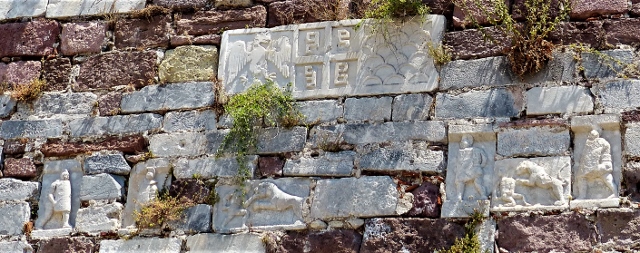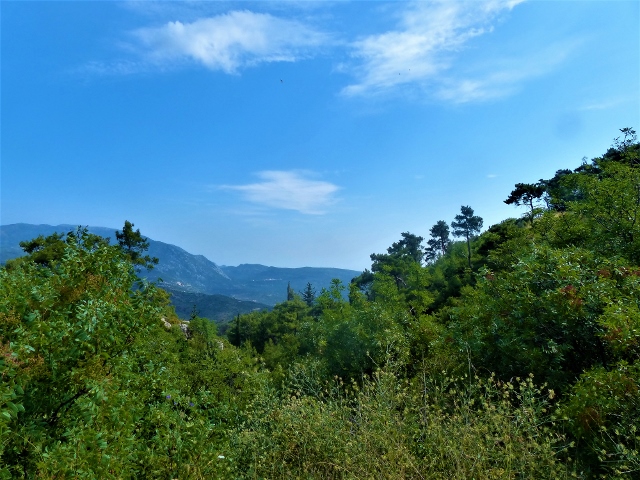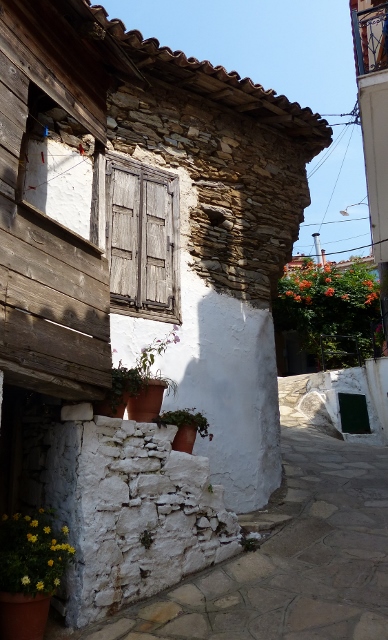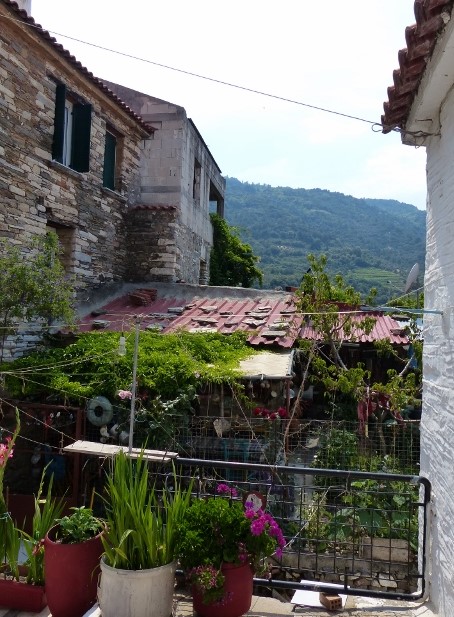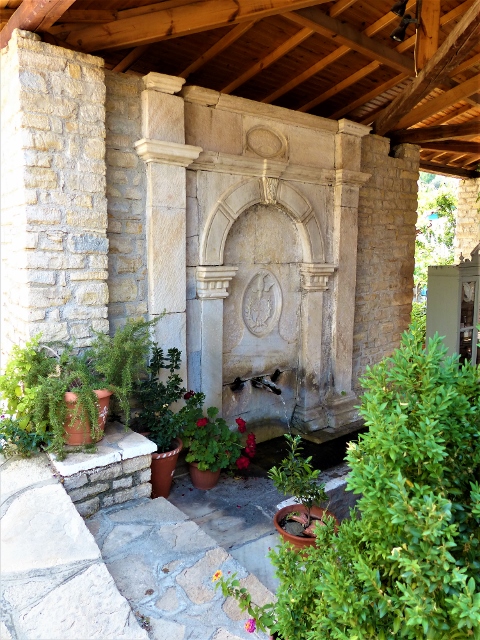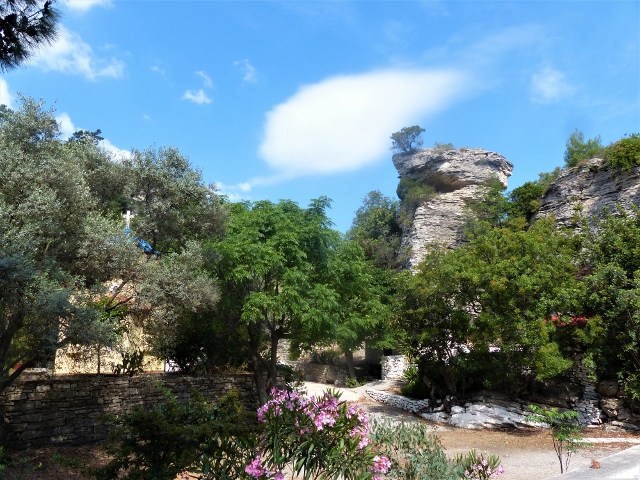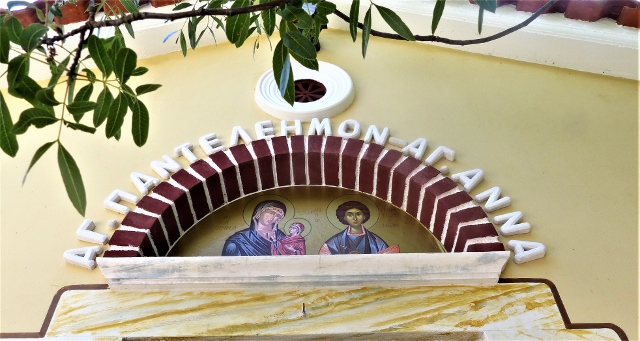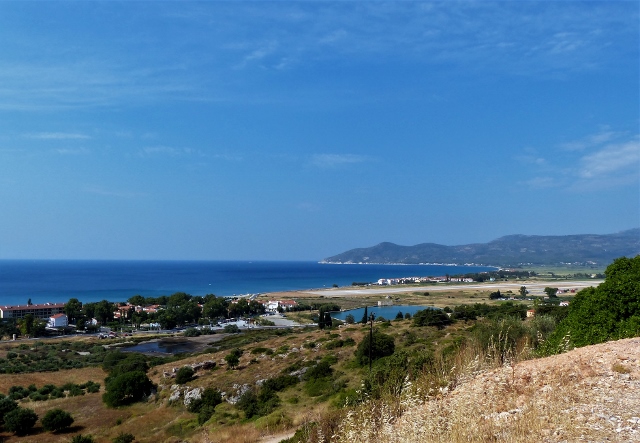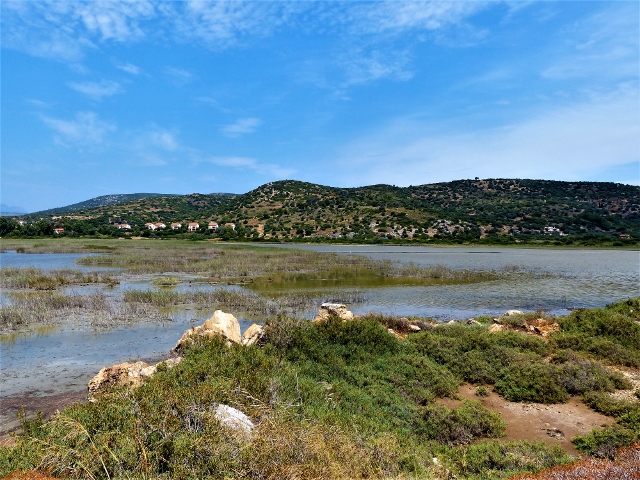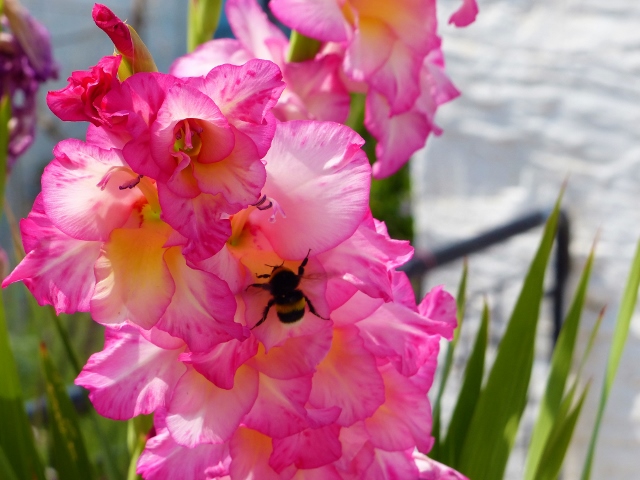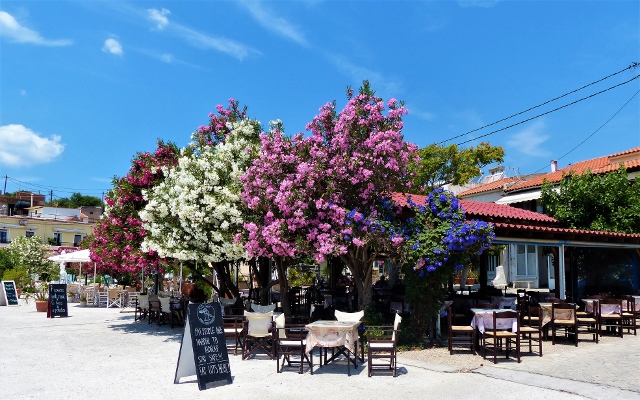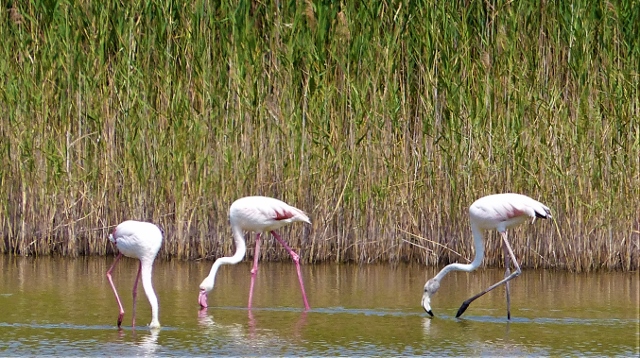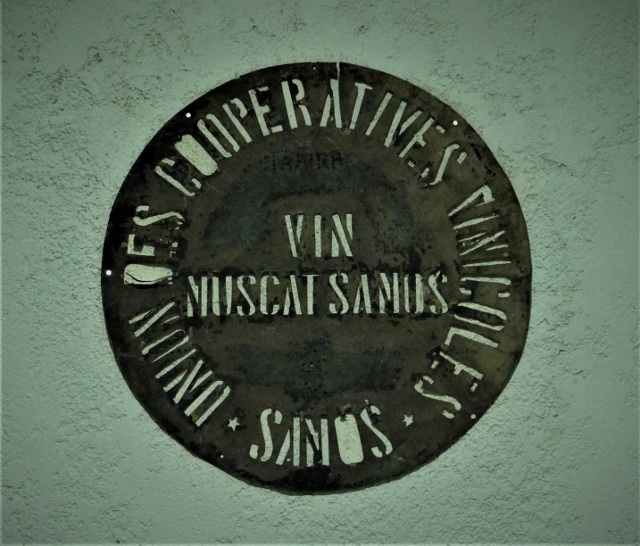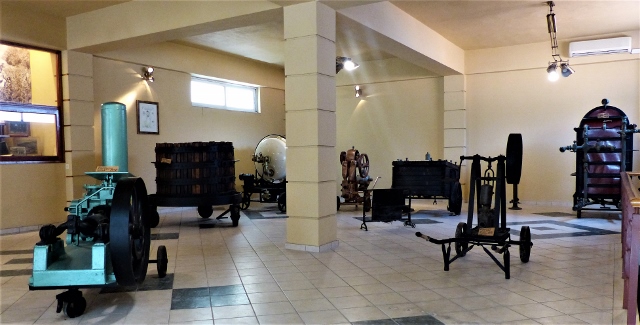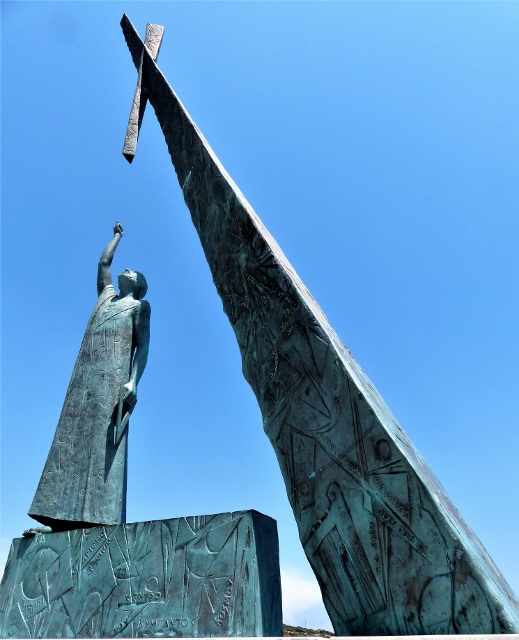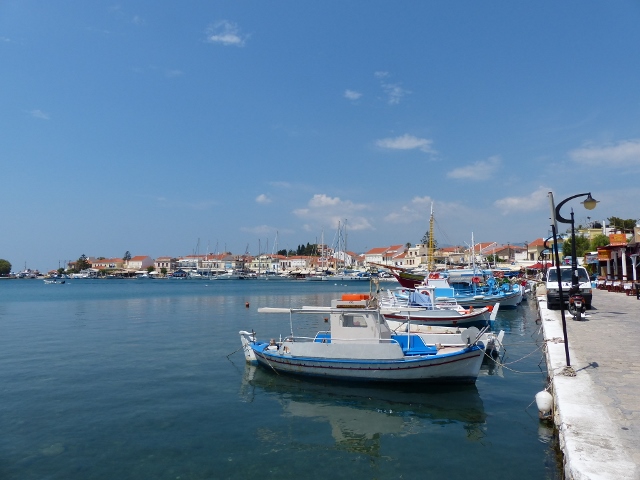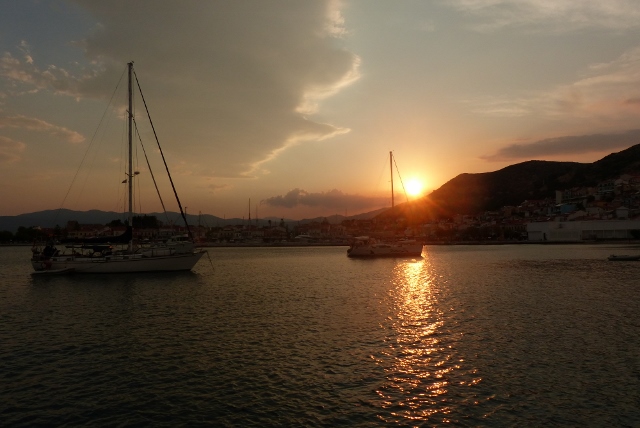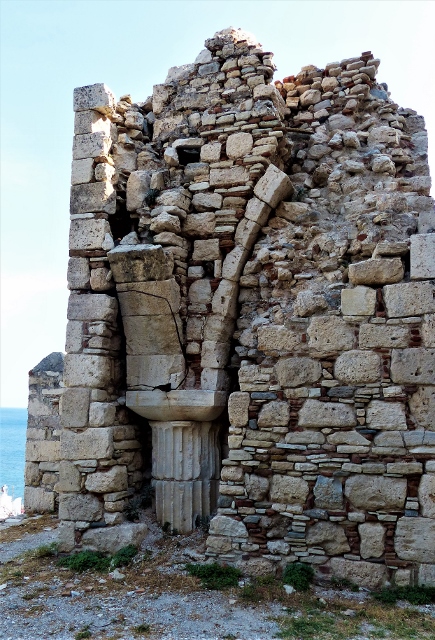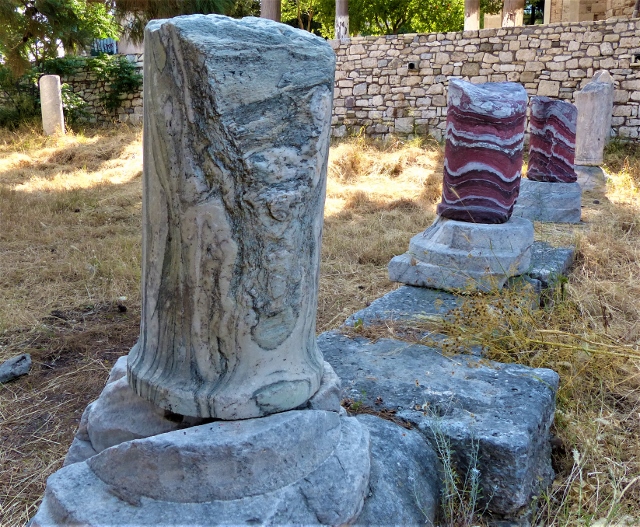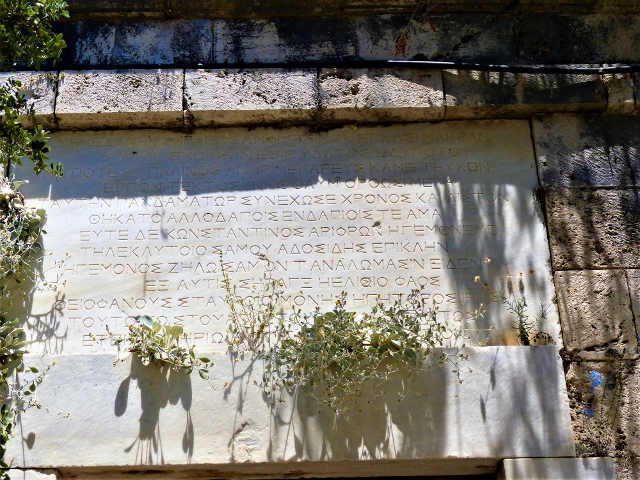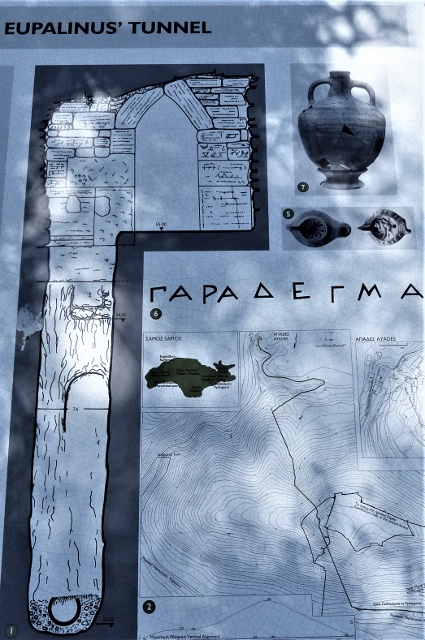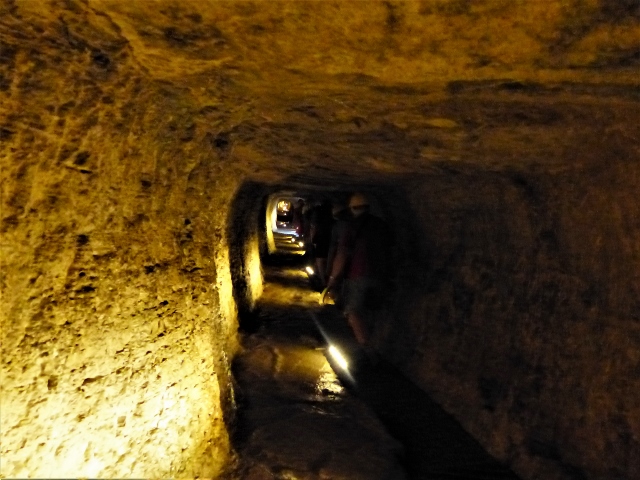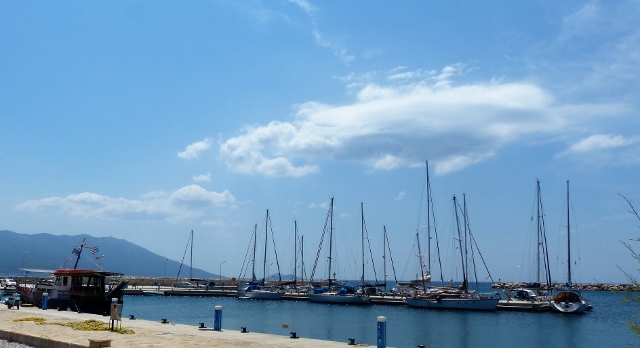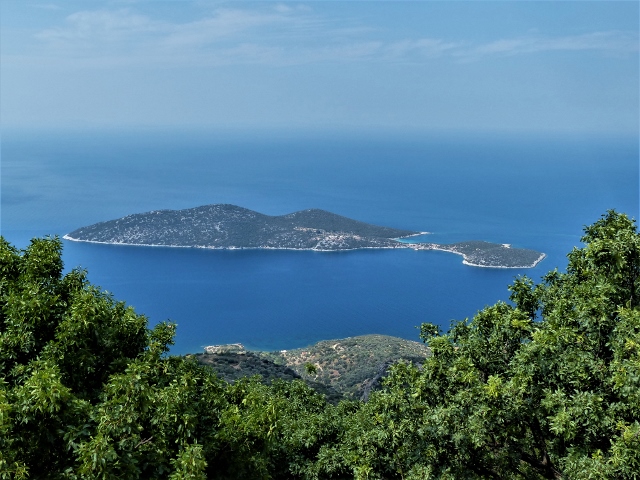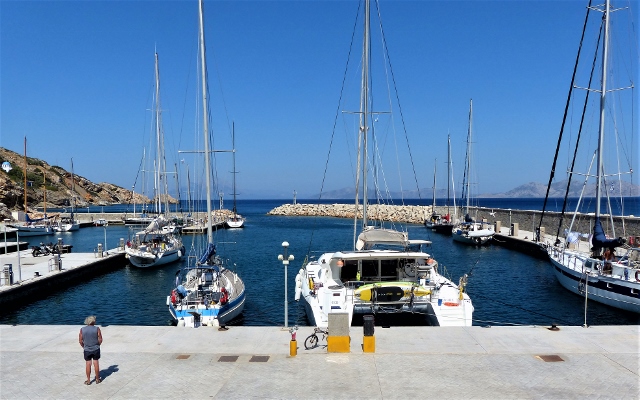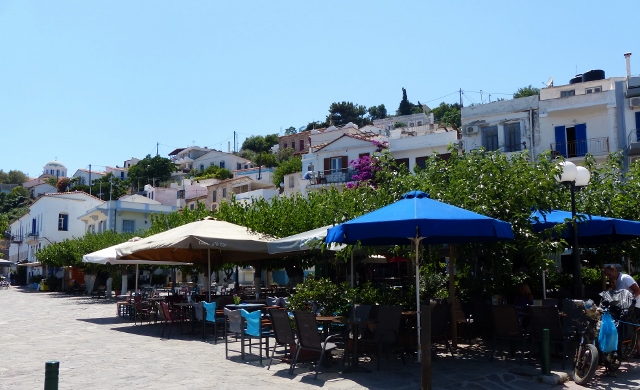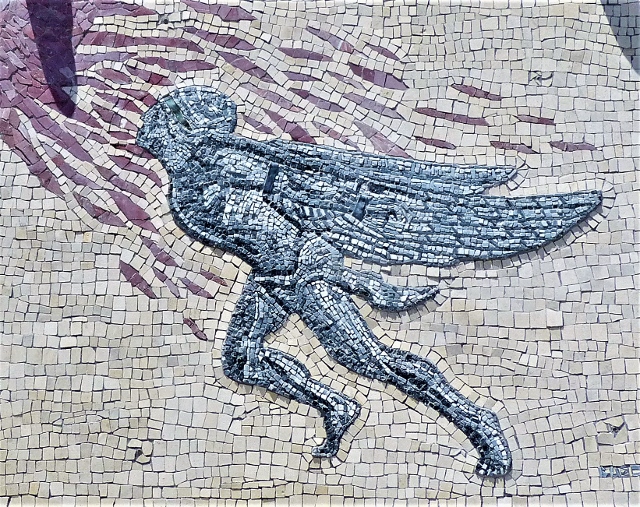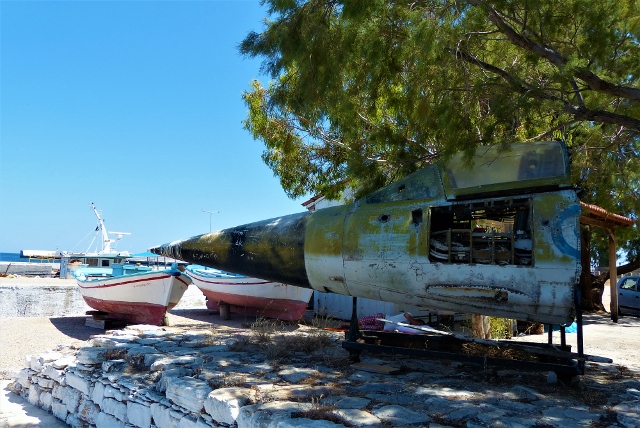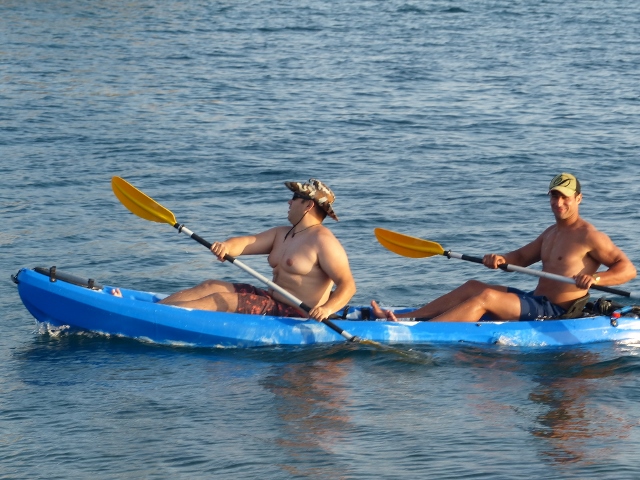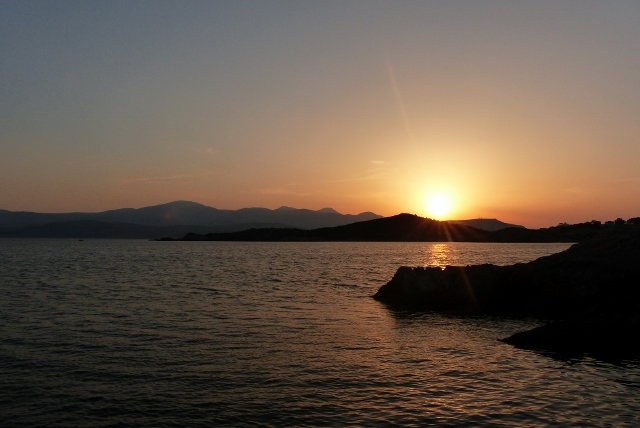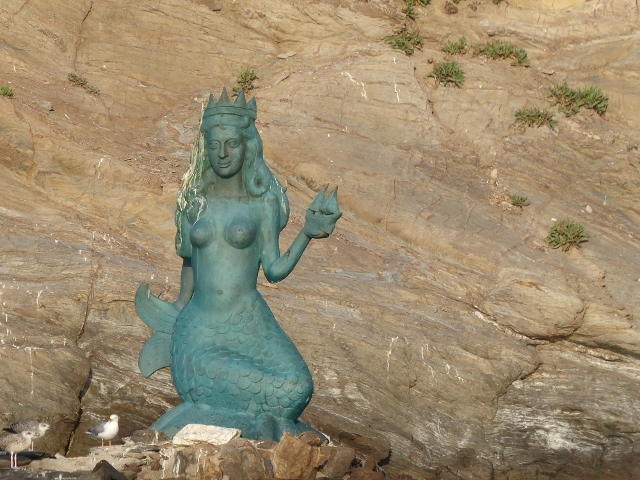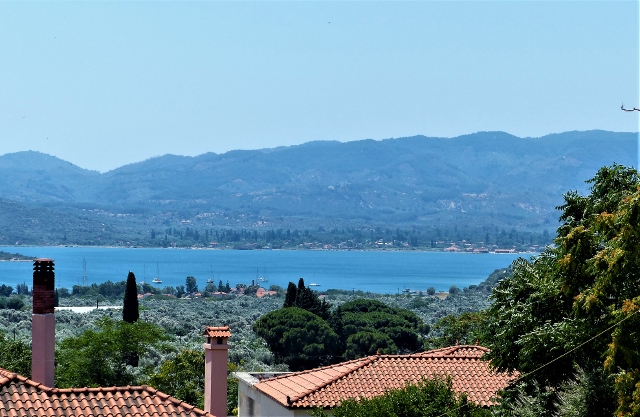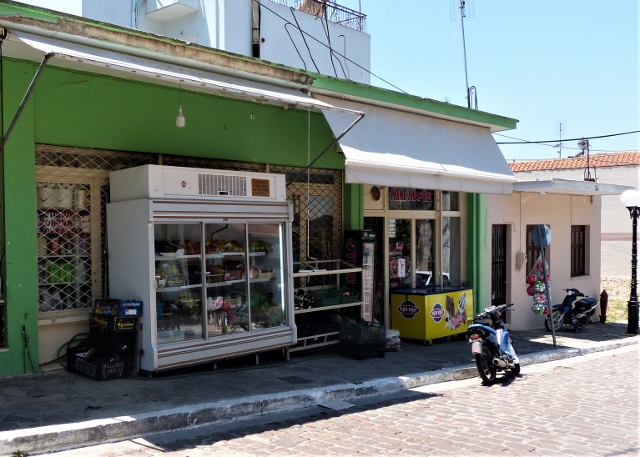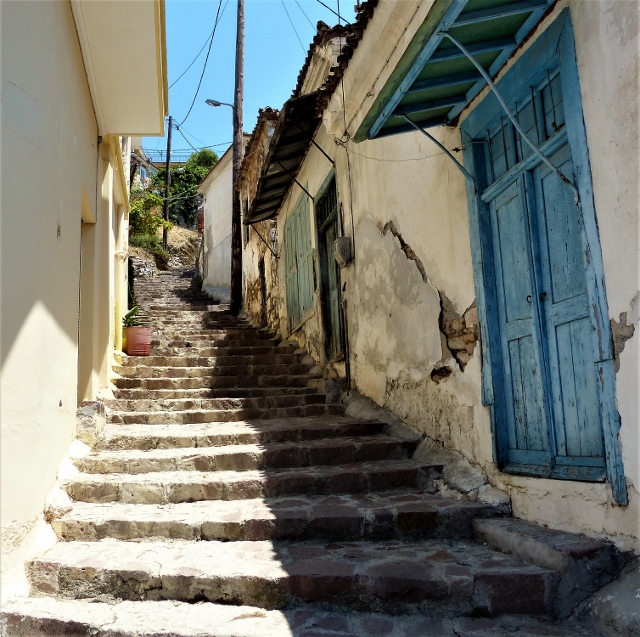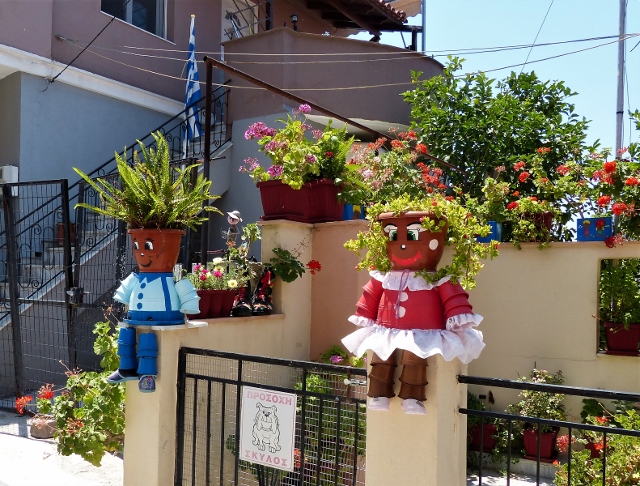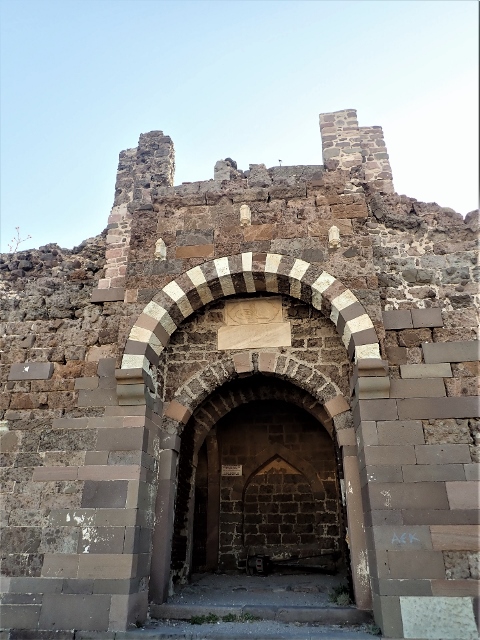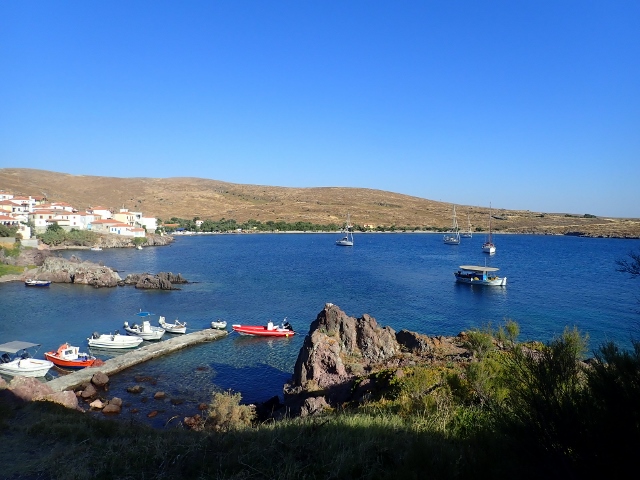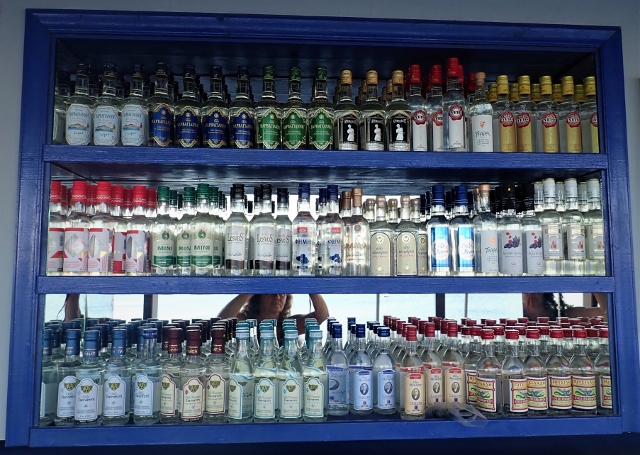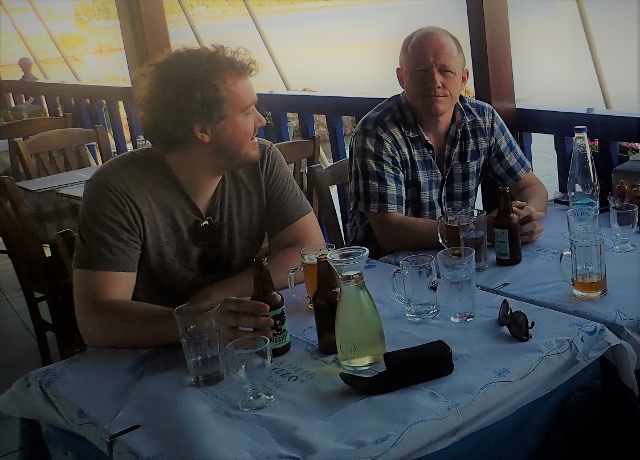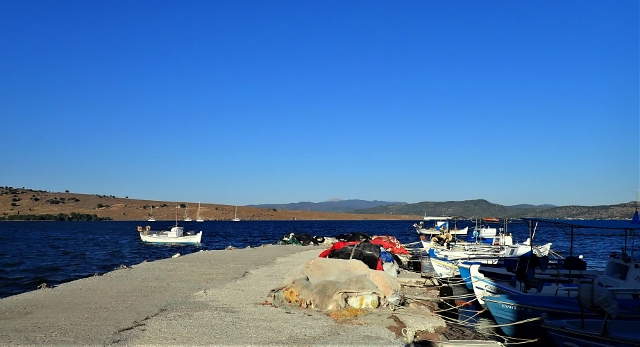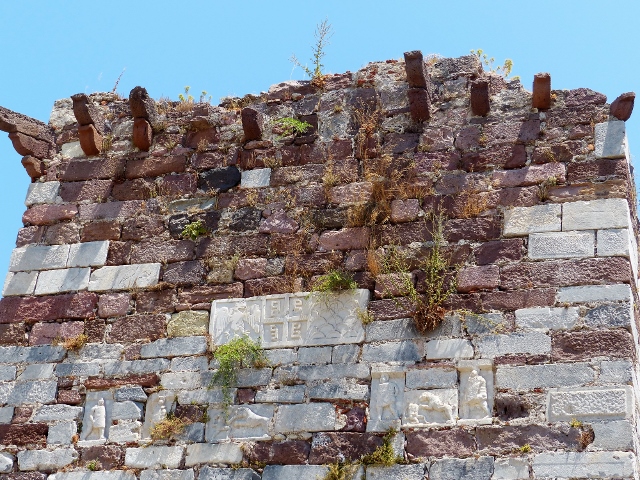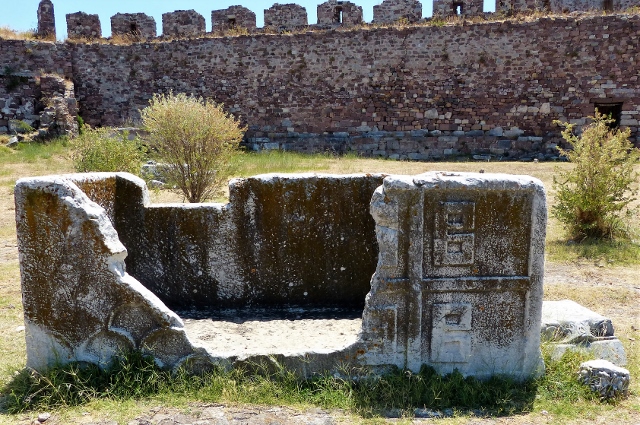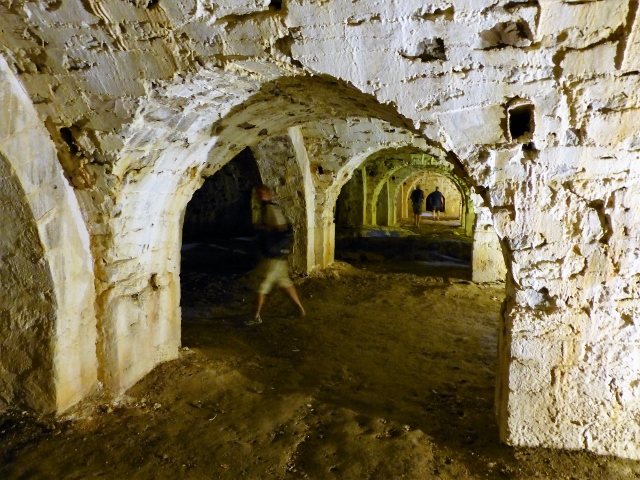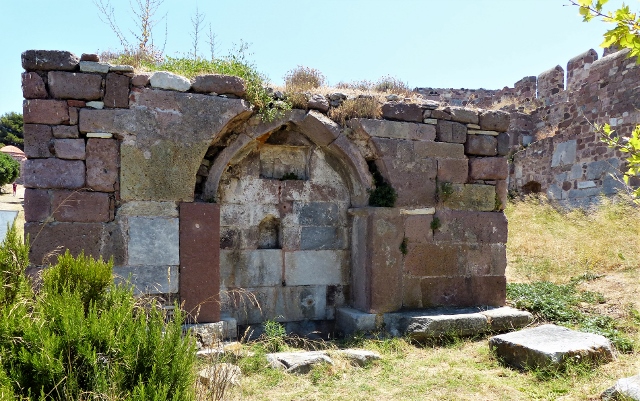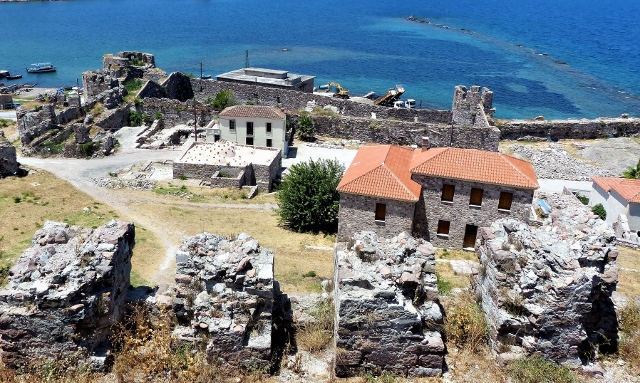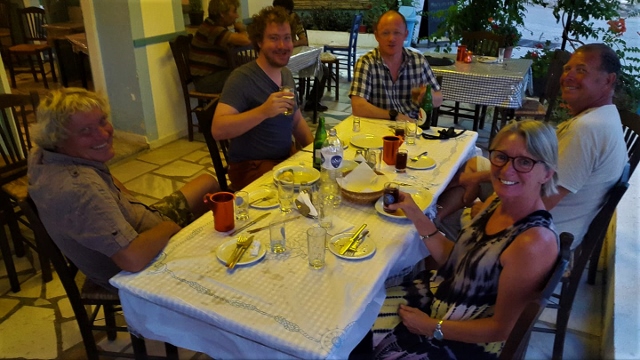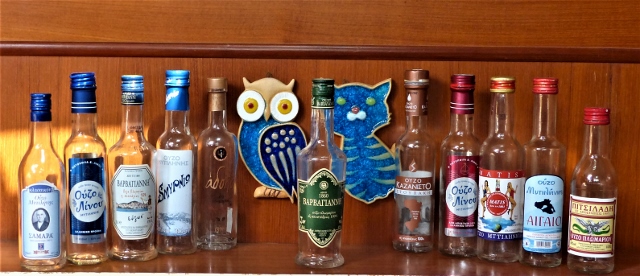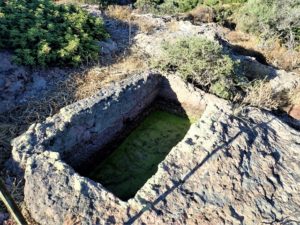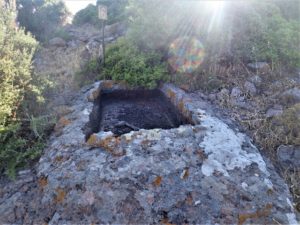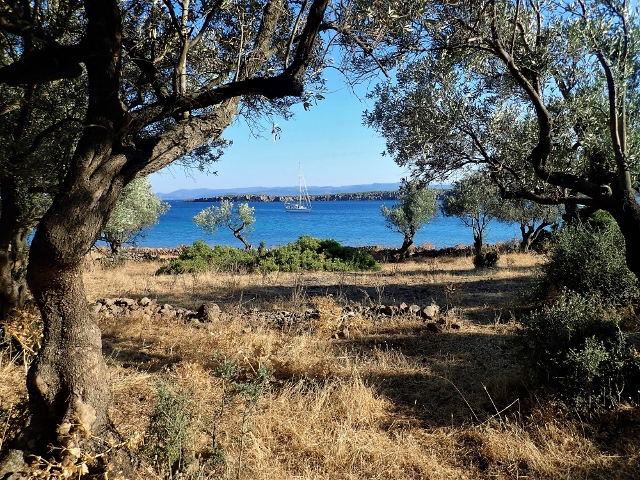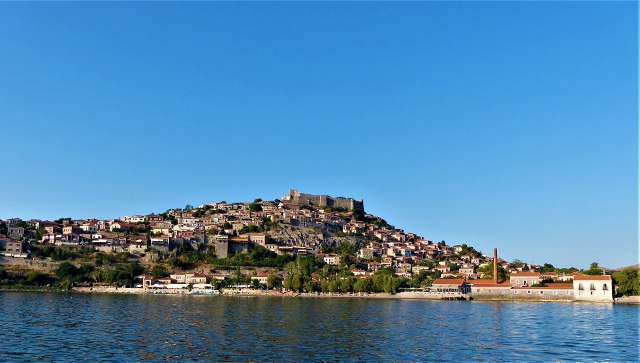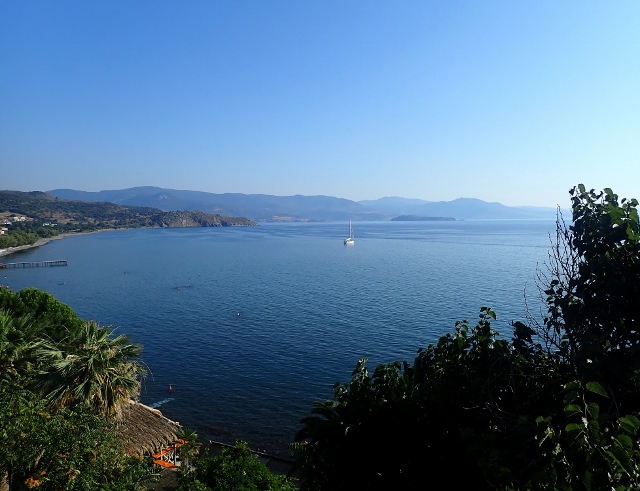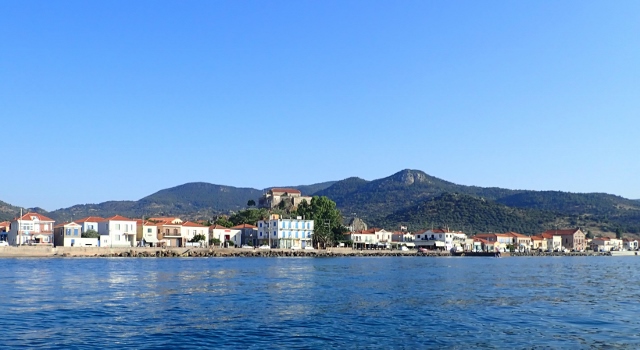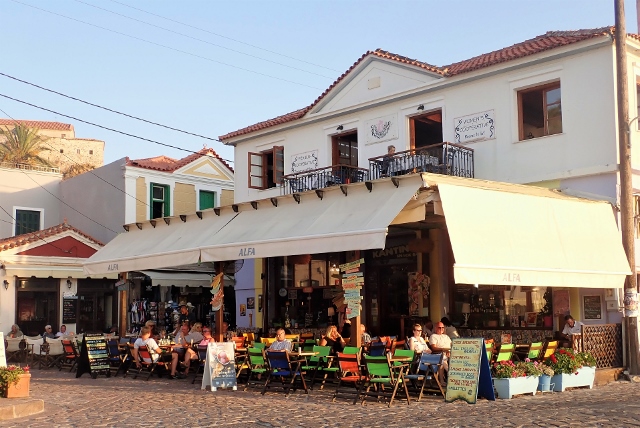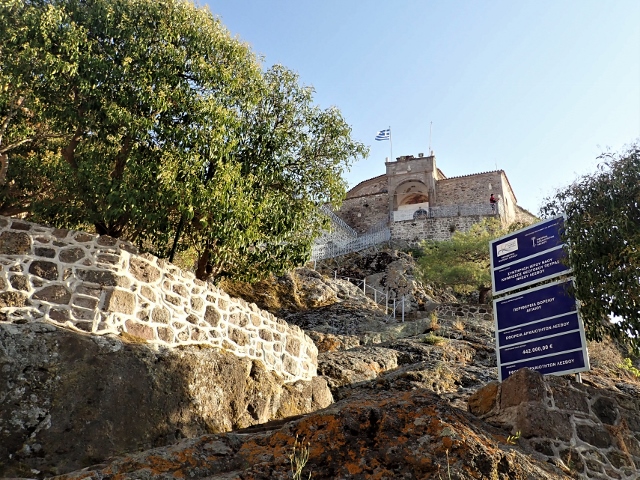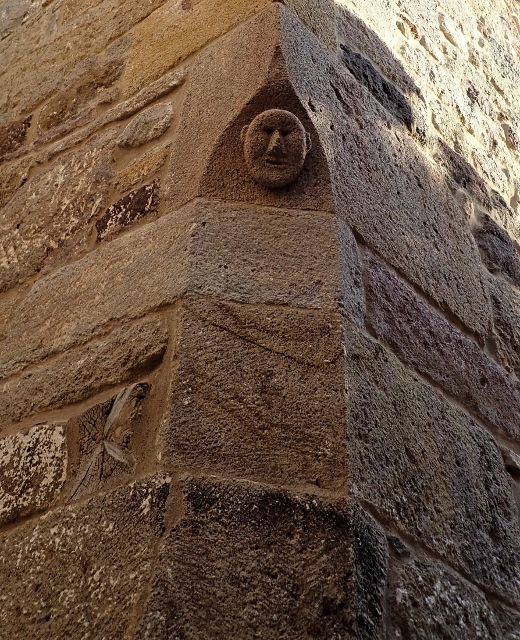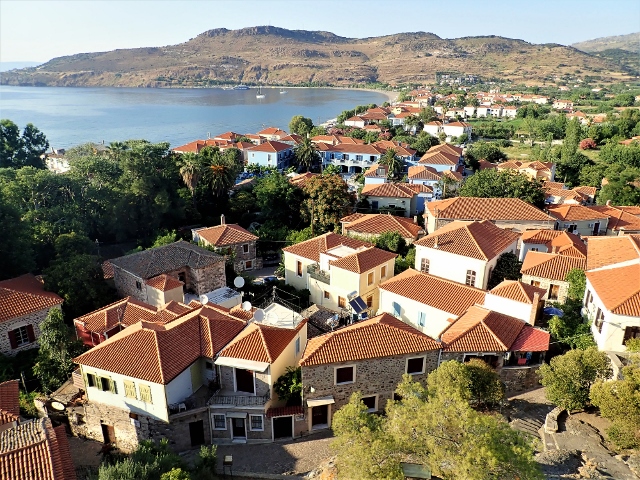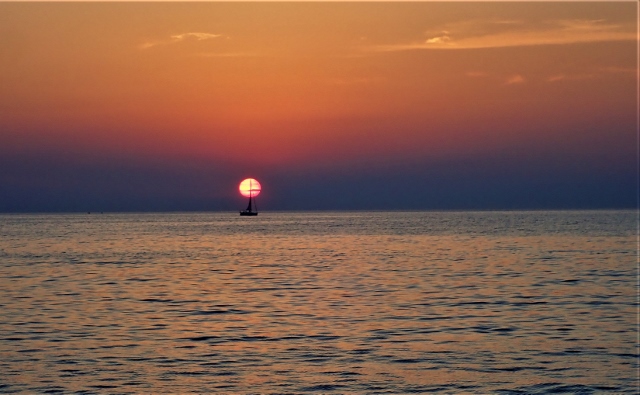This post covers the period between 16th June and 10th July this year [2019 for anyone who might read it in the future!] and chronicles, firstly, Mike’s and my return to three of the Eastern Sporades islands we visited on our final charter holiday in Greece in 2009. Secondly, it covers a couple of the same group of islands further to the north, one of which neither of us had previously visited and one I had been really looking forward to returning to because two non-sailing holidays there held great memories for me.
So, firstly, Sámos, Foúrnoi and Ikaría – three very different islands each with their own character.
Sámos is the largest of these three islands and many of you will have heard of it as it is a very popular tourist destination. Unfortunately, in recent years, its reputation has been marred by reports of a huge influx of refugees and asylum seekers arriving both legally and illegally from the Turkish mainland. Whilst the reported numbers may well be correct, from what we saw, any impact on tourists is negligible and it is a real shame that holiday makers are choosing other destinations because businesses in several resorts are suffering.
There are so many positive reasons to visit. The island was quite lovely and green….
….and had fully recovered from the devastating fires of some years ago, though sadly there was another in August of this year about six weeks after we left.
There are mountain villages….
…. hidden churches….
…. wetlands….
…. saltflats…..
….and plenty of colourful nature and wildlife.
The capital, Vathy, is the home of the co-operative of local vintners from where the world renowned sweet Samos wine is produced.
Following a visit to its small museum….
…. we chatted to one of the staff – whilst tasting, of course! – and learned, with some surprise, that their best quality sweet wine is actually shipped to Athens where it is incorporated into 7 Star Metaxa. Whilst we are also rather partial to a good Metaxa [Brandy, to the uninitiated] we felt it rather a shame that much of the glorious wine was “lost”.
The great mathematician Pythagoras was born here….
…… the town/anchorage we stayed in being named after him.
We were possibly one of the last boats to be able to use that anchorage. Medium sized ferries come two or three times a week and need turning space. Unfortunately not all boats follow the advice in the Cruising Guide to anchor north of the outer end of the inner mole and ferry captains have apparently complained to such a degree that it has resulted in the Port Authority now designating it as No Anchoring. This is a great pity as, treated properly, there was space for at least a dozen boats who will now either not bother to visit or will have to fight for space in the inner harbour which, when we were in the anchorage for six nights, was almost always full.
Pythagorio also boasts a castle…..
…and in the hills behind the town is the fascinating Evpalinos Tunnel.
In 524BC what is now Pythagorio, was called Samos and was the island’s capital. There were upwards of 80,000 people living in the metropolis and sourcing drinking water became a crucial issue. Up stepped the ingenious engineer Eupaulinus under whose direction labourers dug into the mountainside and built a 1034m tunnel – one of the most technologically significant achievements of antiquity.
The tunnel was 1.80m x 1.80 m and consisted of a corridor 1.60m wide with a deeper ditch dug below it. The ditch ranged from 4m deep in the north to over 8m deep at its southern end to ensure the waters natural flow through the clay pipes running along the bottom of the ditch.
The most amazing thing about the tunnel is that the hewing through limestone started simultaneously from both ends and the two crews of stonemasons who worked for approximately 8-10 years with just hammers and chisels met with almost no deviation as they followed the exacting plans and instructions Eupaulinus gave them. Following the completion of the tunnel, walls were added inside to prevent collapse and the aqueduct was then used for approximately 1,100 years, abandoned when the clay pipes finally became too clogged with calcium deposits from the water even though holes had been cut some time following construction to facilitate cleaning.
We found the scientific and technical detail and achievement mind boggling. It is a shame that the same attention to detail is not apparent in the way that visitors are now taken into the tunnel. We paid €8 each to be marched to the middle of the tunnel and back again with no explanation by the guide.
It wasn’t that the commentary was in Greek – which we would have accepted – he just didn’t speak to anyone in any language. It was also by accident that we found the excellent visual display at the back of a shelter, which most visitors didn’t see, and which provided us with a full description of the construction which I have précised above.
To enable us to see as much as we did of this fabulous island we hired a car for two days and as well as enjoying the interior we also visited a few of the other available harbours/anchorages. We found Karlóvasi on the NW corner to be rather bleak – though in a southerly or an emergency it would probably be fine. The harbour at Vathy was really quite exposed and there was certainly a lot of swell when we visited – though that is rather unsurprising as it is north facing.
The anchorages on the east/south east coasts looked very nice but as we were going north and west they would have taken us out of our way and resulted in a longer distance to cover into wind.
Samos marina lies just on the eastern edge of Pythagorio, is purpose built, very clean and has a good fuel dock which we used before leaving the island. A new marina lies near the south west corner at Marathakambos…..
…. where there is also room to anchor in the bay. The marina is not officially operating and the water/electricity is not turned on. However, as you can see, it is already popular.
We considered going here or to either the anchorage at Ireon or that at Limionas – the latter of which our friends on “Coriander” used some days later and enjoyed. However, we opted instead to sail further west and take in two more islands passing one anchorage I would really like to have gone to on the small island lying just off the middle of Samos’s south coast – Samiopoula…..
……but with the given wind and swell it just didn’t happen.
Foúrnoi, which lies between Samos and Ikaria, is a small, much indented, island surrounded by a few even smaller ones making up an archipelago which was once a pirate’s lair. Its capital is Korseon and the French privateers who commandeered it gained a significant reputation – such that their name became applied to many pirates of the Eastern Aegean – “Corsairs”.
Korseon is the home to the islands fishing fleet and it is reputedly hard to find an available berth there, especially June – Sept so we were looking for an alternative anchorage. The most popular bays for visiting yachts are on the west coast, just south of the capital, as they offer most shelter from the Meltemi winds. Our overnight stay coincided with a fairly strong NW wind and having read various reports by other yachties we realised that even if those western bays had some protection from the wind, swell would most likely enter making for an uncomfortable night. So, we opted to look at a bay on the east – Ormos Vitsiliou which got a couple of good write-ups on the Cruising Association’s very helpful App – “CAptain’s Mate”. However, we didn’t feel comfortable there because when slowly approaching the head of the bay the depth dropped from 50m to 6m in just over a boat length which meant that we would be anchoring on a shelf. We always test the anchor really well to make sure it is dug in and 99% of times we don’t move – but it has happened once or twice in the last eight years and I am afraid I like my sleep – which I don’t get if I am fretting about things like the anchor dragging off a shelf.
So, we decided to look at Ormos Vlikhada – a bay on the southern point of the main island just west of Ak. Agridhio – and found it to be well sheltered and gently shelving. Result!
Having spent one night there we had the choice of staying for one more or moving to Ikaría for just one night as a weather window was opening for us to get a good passage north towards Lésvos. We decided we would move on.
Other than in August when, seemingly, the island is packed with Athenians and foreign visitors visiting to join in the “panigyria” celebrations [wild parties with food, wine and traditional dance thrown in many of the islands villages], Ikaría is serene and laid back. Visiting, even for just one night, was the right choice as it gave us the opportunity to see another new, but un-commissioned, marina at Agios Kirikos.
Studying the layout of the marina and positioning of the electricity/water outlets we think that the original plan was that boats would berth stern to. If this was to work lazy lines would definitely need to be installed and even then manoeuvring would be pretty tight. So other than on the back wall, yachts are berthing alongside giving room for around 20 yachts in total [and a few more if rafted]. We thought it was a delightful spot, made even more so by the lovely small town….
Unsurprisingly, given that the name of the island results from it being where this Greek hero fell to earth when his wings melted……
…..this mosaic marked the short pedestrian walkway between the town and the marina, but exactly why this relic was next to the old harbour was unclear.
It was now time for us to move on to the second part of this Eastern Sporades journey and we left Ikaría at 05.40 on the 24th June. We had a pleasant 57 nm motorsail north in light winds and, at times, an almost flat calm sea – a far cry from the 25+ northerlies and 2m waves and swell of the previous three days which we had chosen not to battle against.
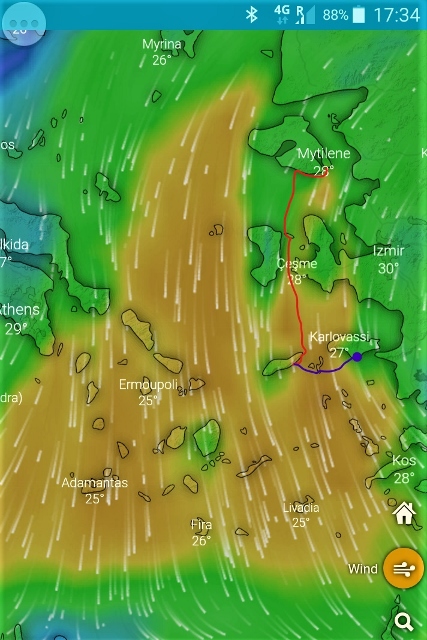
Blue shows the route we took during the fairly strong northerlies and Red shows where we went when it calmed down [a bit at least!]
We were visiting on a Wednesday and had a back-up plan of one of the nearby anchorages should there be no room in Mandráki but, at 17.00, we dropped the hook as shown on the pilot book chart. It all looked lovely.
About half an hour later a canoe came by….
….. they were a couple of off-duty Port Police who told us that anchoring is no longer allowed in Mandráki and we had to move to the purpose built pontoon. As we were approaching Mike veered away because the depth was too shallow for us. We misunderstood what was being said – i.e. that we needed to move further along the pontoon, closer to the harbour wall where it was deeper and moved instead to the one remaining space on the wall itself after a very kind Danish couple moved their boat forward to allow us in.
We wandered up into the town, had a drink on the harbour and had a lovely evening meal as the sun set….
….. before a fairly early night in preparation for another long day ahead.
We left Mandráki at around 07.30 passing this lady on the way….
…. and raised the sails once we were in open water. Given that the previous day had been so calm we were really amazed at how lumpy the channel was between Khios and Lésvos. As well as dodging the commercial traffic we also had to contend with pretty big waves and mid-morning were hit by a rather big one which resulted in the loss of our flagpole and ensign from the stern. Looking at it later it was clear that the aluminium rivets had corroded before shearing – but even so!
We decided our best course was to head a little out of our way – i.e. approach the southern coast of Lésvos further west than originally intended. It added a few miles but was better for the wave direction, gave us calmer water once in the shelter of the island and didn’t actually add much, if anything at all, to the time it took us. At 3.30 in the afternoon we entered Kólpos Yéras and took the sails down to motor up the gulf to the fantastic anchorage at Skála Loutra.
We spent the next three days exploring the small village of Loutra about 40 minutes’ walk up the hill through the olive groves….
……. relaxing after our two long passages and preparing the boat for our visitors, James and John.
They were with us for a week during which time we spent the three middle days sailing to Sigri and back to Skala – both times via Apothekes Cove.
Sigri is a fishing village on the more remote west coast of Lésvos. It is visited by a few tourists but since the main visitor area, the nearby famous Petrified Forest, closed due to underfunding I fear that it now gets even fewer visitors as there is little else to travel west for from the southern and eastern resorts. Fortunately I visited the forest some years ago when access was still possible.
It is a really pretty little village with narrow streets and an Ottoman Castle – which was also closed.
The views over the bay were fantastic….
…..and the Ouzo available in our chosen restaurant was quite impressive…
…though on this occasion the guys preferred the craft ale…
Apothekes is the first available anchorage in the large landlocked gulf – Kólpos Kalloni. It is also the most sheltered from the prevailing north winds.
Entrance to the gulf is quite exciting – if you enjoy negotiating a narrow channel through reefs in a 25 knot headwind. I understand that the buoyage is not always there but it certainly was in July of this year. Entrance without it would be near impossible in the conditions we had the first time, though in calmer waters the reefs can be seen more easily.
The hamlet consists of a few houses and a taverna which has a limited menu but what was available was good and very reasonably priced. We ate there on both occasions, the second time having been joined by Steve and Gill who had done a two day passage to meet up with us again. Our accompanying beverage that night was wine. The white was fine but after one sip each of the red, John and Gill fed the rest of their half carafe to the geraniums!
Once back in Skala Loutra we all took the bus into the capital of Lésvos – Mytilíni. We enjoyed wandering the back streets and found our way to the fortress. For the princely sum of €2pp we visited the Byzantine castle which was enlarged by the Genoese and again by the Turks is now mainly a ruin…
….. though some interesting structures remain.
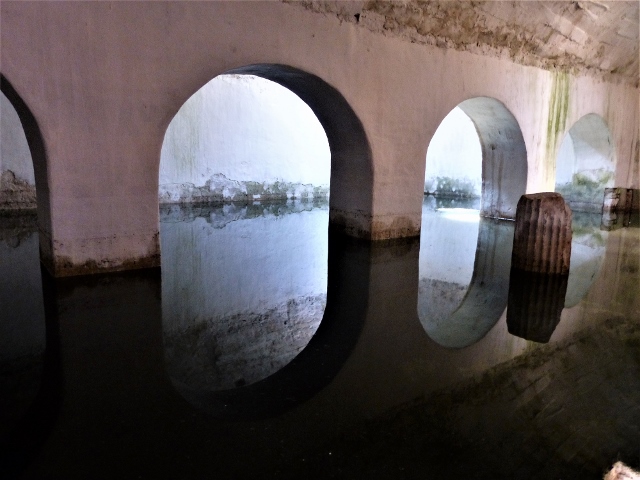
The underground tank of one of two Ottoman public fountains inside the castle – water still flows through
It all made for a pleasant couple of hours stroll with the additional bonus of a good view over what was the lower level of the fortress and the now sunken old harbour.
All too soon it was time to say goodbye to James and John – but not before a final meal where they, with a little help from the rest of us, tested a number of Ouzo. Well you have to – after all, Lésvos is the island most renowned for its production.
By the end of their visit “Owl and Pussycat” almost resembled the restaurant in Sigri!
Some more interesting archaeology awaited us…..
…….. about 50metres inland from the shore of our next Lésvos anchorage……
……Palio Kayu in Makris Yialos bay on the NE corner of the island, which we again found on CAptain’s Mate rather than in the Cruising Guide. There are numerous reefs and above and below water rocks in the bay and surrounding the group of small islands [Nísidhes Tomaria] which protect it so caution was needed – but it was well worth it to anchor in the beautiful crystal clear waters in lovely surroundings visited by very few yachts.
I stated at the start of this blog that I was really looking forward to returning to Lésvos and, as you can see, it was again an enjoyable experience. But it didn’t finish there. I was even more delighted that the prevailing northerlies dropped for a few days allowing us to anchor off the beach of the small village resort of Petra, where I had previously stayed, and also off the town of Mithimna [aka Mólyvos]. Still pretty as a picture from the anchorage……
….. I, personally, found Mithimna to have been over gentrified since my last visit. The streets winding up to the castle at the top are still lined with small shops – but instead of a laid back local feel to the place, there appear to be more boutique hotels and up market restaurants now lining the harbour and shorefront attracting the chic.
However Petra, named after the giant overhanging rock on which sits the C18 Panagia Glykofilousa……
…..was just as I remember it.
114 steps lead up to the church….
……from where we could see “Owl and Pussycat” and “Coriander” anchored just outside the old harbour.
Anchoring now appears to be the only option. The east facing mole and the fairly shallow inner harbour are taken up by small fishing and other local boats and the bigger south facing mole, which was described in the pilot as being available to visiting yachts, is now fenced off due to the security required as a daily ferry arrives from and leaves for Turkey – requiring proper immigration facilities. We were, however, given permission to go alongside after the ferry had left to top up with fuel.
So glad I got the chance to return. A great place, a great evening and another fantastic sunset too.

